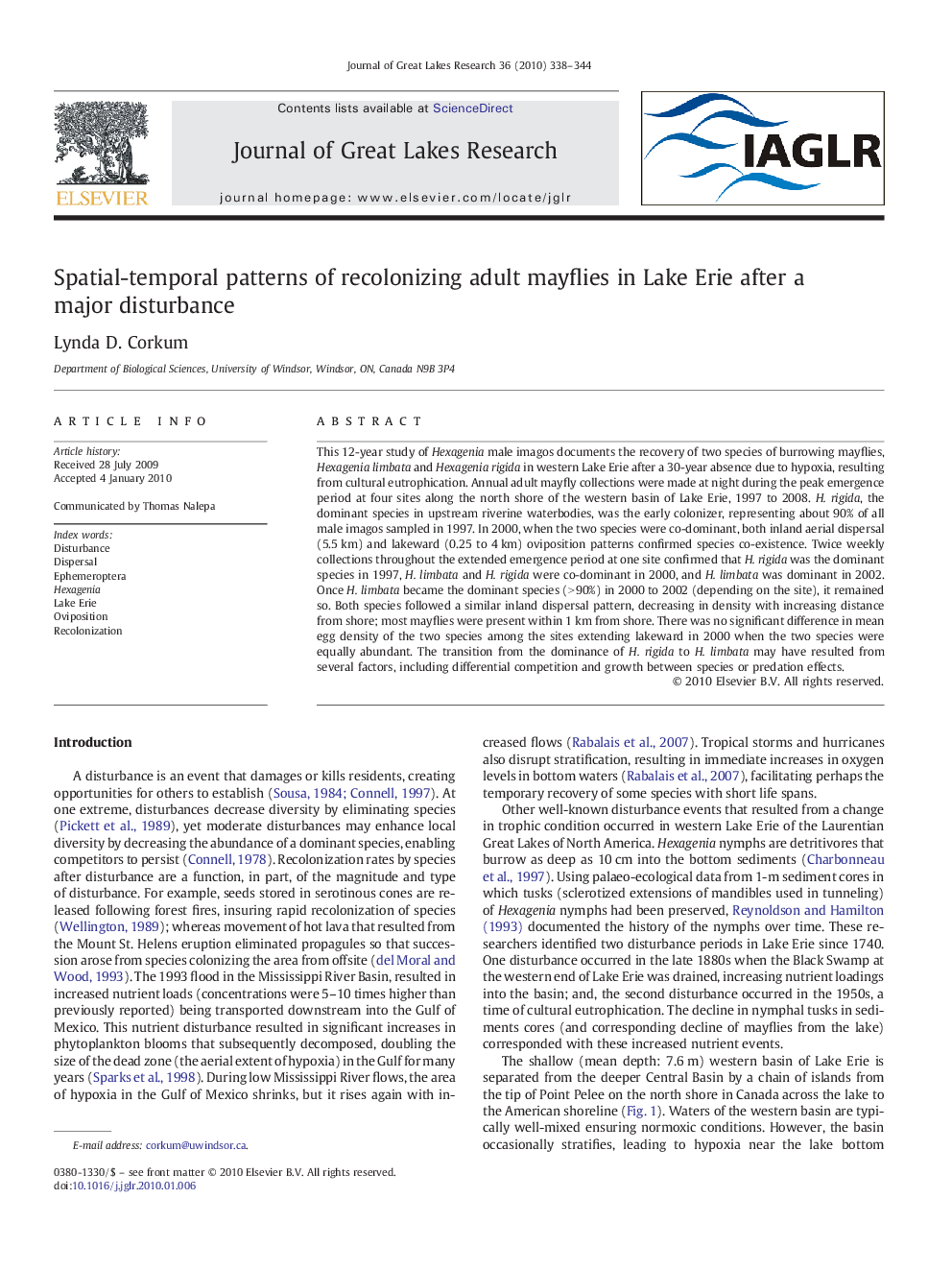| Article ID | Journal | Published Year | Pages | File Type |
|---|---|---|---|---|
| 4399205 | Journal of Great Lakes Research | 2010 | 7 Pages |
Abstract
This 12-year study of Hexagenia male imagos documents the recovery of two species of burrowing mayflies, Hexagenia limbata and Hexagenia rigida in western Lake Erie after a 30-year absence due to hypoxia, resulting from cultural eutrophication. Annual adult mayfly collections were made at night during the peak emergence period at four sites along the north shore of the western basin of Lake Erie, 1997 to 2008. H. rigida, the dominant species in upstream riverine waterbodies, was the early colonizer, representing about 90% of all male imagos sampled in 1997. In 2000, when the two species were co-dominant, both inland aerial dispersal (5.5Â km) and lakeward (0.25 to 4Â km) oviposition patterns confirmed species co-existence. Twice weekly collections throughout the extended emergence period at one site confirmed that H. rigida was the dominant species in 1997, H. limbata and H. rigida were co-dominant in 2000, and H. limbata was dominant in 2002. Once H. limbata became the dominant species (>Â 90%) in 2000 to 2002 (depending on the site), it remained so. Both species followed a similar inland dispersal pattern, decreasing in density with increasing distance from shore; most mayflies were present within 1Â km from shore. There was no significant difference in mean egg density of the two species among the sites extending lakeward in 2000 when the two species were equally abundant. The transition from the dominance of H. rigida to H. limbata may have resulted from several factors, including differential competition and growth between species or predation effects.
Related Topics
Physical Sciences and Engineering
Earth and Planetary Sciences
Earth and Planetary Sciences (General)
Authors
Lynda D. Corkum,
